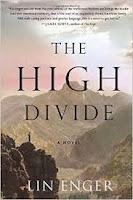LAST GREAT READS FOR MAY, 2015.
Blood
on Snow, by Jo Nesbo
Olav
Johansen is dyslexic. He has had trouble
reading all his life, but it hasn’t stopped him trying. His memory for what he so painstakingly
absorbs is razor-sharp, as he reveals in his first-person narrative – except
that he is self-deprecating whenever he shares with the reader a little morsel
of his vast knowledge on myriad subjects – ‘but what do I know?’ He is also a romantic, and inclined to donate
money anonymously to down-and-outers; he
falls in love with fallen women – and he is also a hit man, a ‘fixer’ for one
of Oslo’s bigtime gangsters.
He sees nothing incongruous in his coldblooded
dispatching of whoever his boss tells him to remove, and the soft side of his
nature which exhorts him to care for the exploited prostitutes his boss
employs, particularly Maria, a deaf-mute with a limp: he still can’t understand why Maria works as
a prostitute, until he finds out that she is paying off her junkie boyfriend’s
drug debt.
Olav’s
life is fairly predictable, and he doesn’t expect it to change in any dramatic
way – until his boss tells him that his next ‘assignment’ is to remove the
boss’s faithless wife. Olav feels a
sense of awful forboding with regard to this new task, especially when he
stakes out the rich apartment in which Mrs Boss spends her ineffectual days and
learns that she has a young man who visits her every day at the same time to
beat and rape her. True to form, Olav’s
warped sense of chivalry rears its mutant head and he decides to rescue Mrs
Boss – and ‘fix’ her tormentor.
And
that is just the start of Olav’s life-threatening problems. Life goes pear-shaped and remains so, despite
his best attempts to resolve his situation so that he may be the White Knight
for Mrs Boss. Maria has been entirely
forgotten and while many people will die because of his actions, he will learn yet again that the people he
most trusts are capable of the worst betrayal.
Once
again, Jo Nesbo has created an anti-hero that no-one wants to fail. As always Mr Nesbo makes each sentence do the
work of ten, giving this story a huge
impact in relation to its size, and the bloody imagery of the title is never
more appropriate than in the final pages.
Highly recommended.
The Murder Man, by Tony Parsons.
This is the first thriller
that Tony Parsons has written, and what a good time he has had with the
genre: all the boxes are ticked; there are plenty of corpses; the suspense builds with each murder; there are heaps of suspects, and it is almost
guaranteed that no-one, and I mean no-one will know whodunit until the very
last pages. What more could a dedicated
thriller reader ask for? Mr Parsons
fills every requirement.
Detective Constable Max Wolfe has just received a
promotion and a pay rise, thanks to his disobedience – not because he meant to
be insubordinate, but he acted spontaneously, on a hunch that proved to be
right, that saved a lot of lives after he was ordered to cease and desist.
Now he has been seconded to the investigation into the
murder of a prosperous London banker who has been dispatched in a very novel
fashion: his throat was not merely slit,
but excavated – gouged out with a weapon that was usually used by wartime
commando troops. To complicate matters
further, no fingerprints or indeed any trace of the killer is found at the
murder scene, and were it not for a school photo of seven teenage boys found in
his office, the police would not even have a starting point. Until Max, with the enthusiasm of the new
recruit pursues the old school connection between the boys, most of whom attend
their banker friend’s funeral. Several
of them have become very successful, including an aspiring politician and a
prosperous lawyer; one has become a
warrior captain serving in Afghanistan – but one has committed suicide, and
another is a heroin addict.
Despite the horrible loss of one of their little band,
the remaining friends are reluctant to speak of their schooldays with any
clarity and remain committed to the same story:
they could not understand how anyone could do such a thing – the banker
was a fine fellow, beloved by all – until Max uncovers evidence of cruelty and
sadism, particularly towards the banker’s wife.
Things, as usual, are never what they seem and the situation only gets
worse when the heroin addict is found dead, also with his throat gouged
out. As more of the original seven are
picked off by the same method the remaining potential victims are eventually
only too happy to unburden themselves of their dark teenage secrets, but to no
avail: they still continue to die, and
the police always seem to be just a day late and a dollar short.
Mr Parson has constructed a very busy, convoluted
plot; there are a lot of subsidiary
characters and subplots that require the reader’s concentration, but the pace
rattles along at a very satisfying speed, as do the pages. In fact, this is a page-turner so good that
Detective Constable Max Wolfe (who manages to get himself suspended twice for
not following orders) should not be confined to one book only: I hope this will be the start of a series.








